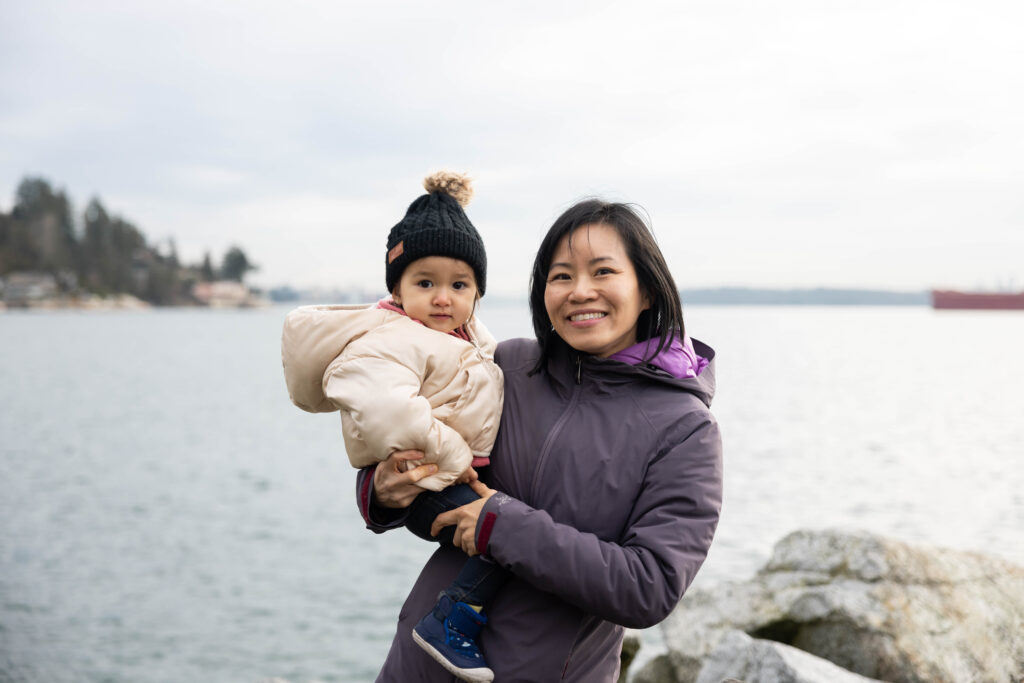Maureen is a marine scientist and educator who leads the Salish Sea Emerging Stewards Program at Raincoast Conservation Foundation. She is of Vietnamese heritage and has lived in BC for most of her life. This is her story, as told to colleague and freelance writer, Auston Chhor.

The Salish Sea Emerging Stewards Program (SSES) started off as a one-day opportunity for youth to get out onto the water and do hands-on science on Achiever, the Raincoast Conservation Foundation’s research sailboat.
We called it our “floating classroom,” bringing kids out into the coastal marine environment and showing them what a day in the life of a marine scientist looks like.
We showed the students how to collect samples of plankton, how to measure underwater noise, how to install camera traps, and many other tools that we as coastal biologists use as a part of our research.
We also introduced the concept of “two-eyed seeing,” which blends traditional Indigenous knowledge about the land, water, and wildlife, with western science to have a holistic understanding of the world around us.
Soon, we realized that one day wasn’t nearly enough time to share everything we wanted to, especially since the students were so energized and excited to learn.
So, we started organizing 4-5 day trips where students could really immerse themselves in the beautiful, wild, and biodiverse ecosystems we have here in coastal BC.
Many of the students have never had experiences like this before, and helping more students experience the coast in this way for the first time was an important part of the program. It’s so much fun that many of our alumni end up coming back for later years as junior leaders, helping guide new students on their journey.
I think it’s also important that we include people who might have never seen themselves in marine science before.

Growing up, I would have never thought that I’d end up where I am today, and I think it’s because I just never knew much about what marine science actually was.
The turning point for me was a field course I took at the Bamfield Marine Sciences Centre on the west coast of Vancouver Island. It was my first time being introduced to the amazing diversity of wildlife and sheer beauty of the coastal environment. I was mesmerized. The experience made me realize that I really wanted to protect all of it and drove me to work in conservation.
But as I began my search for a job, I quickly realized that there were many other people who had the same dream as me.
In conservation work, there are just more people who want a job in the field than there are available jobs. I ended up doing a lot of volunteering with different non-profit organizations to get experience in the field, and that’s something that can be a big barrier to some people as not everyone is able to afford to spend their time volunteering.
There were some cultural barriers too — especially with Asian parents. Sometimes it seems like there’s certain pathways that you’re supposed to follow. In some families, careers such as medicine, engineering, finance, and accounting are understood as “good careers,” and marine sciences didn’t fit well into that mold. But I just felt so strongly that I wanted to work in conservation, so I studied marine biology in university and finally found my way to Raincoast.
Inclusivity in marine science means a space where people feel comfortable sharing their culture, ideas, and backgrounds, without fear of being judged.
With more people from different backgrounds, there will be more opportunity for everyone to learn something from each other.
Everyone has something different to add, and there’s so many different ways to arrive at the same point. But getting there can look very different for many people.
Celebrate Asian Heritage Month!
From building airplanes in Chinatown, to conserving wild salmon in the Pacific, to breaking boundaries in Punjabi drag culture, to exploring the human virome, these experts are making history in STEAM (science, technology, engineering, art & design, and math).
